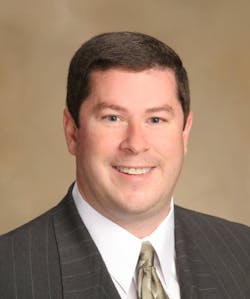U.S. manufacturers are already facing a shortage of engineers and skilled workers, and the problem is only expected to get worse as the massive baby boom generation begins retiring. The leading edge of this group, born between 1946 and 1964, started turning 60 last year. One of the latest organizations to take aim at the problem is the Instrumentation, Systems and Automation Society (ISA). The professional society, based in Research Triangle Park, N.C., announced on June 7 its plans bring new focus to the issue with the launch of a workforce development program. The new ISA initiative will span a broad range of projects intended to elevate the automation profession, covering everything from education programs for young children to continuing education for current automation professionals, new ties to academic research institutions, and a new government relations program aimed at influencing legislators. To learn more about the ISA’s workforce development program, Automation World initiated an e-mail exchange about the effort with Patrick Gouhin, the ISA’s executive director and chief executive officer. Scoping the challenge Gouhin first laid out the scope of the challenge by providing a “back-of-the-envelope” analysis. According to ISA estimates, there are at least 200,000 automation professionals in the United States today. That number includes all automation professionals, not just those working in process automation. Based on an estimated 5 percent per year retirement rate plus a 3 percent annual growth rate for the profession, that means that 8 percent of those 200,000, or about 16,000 new people, would be needed each year in the future. Even when that number is rounded off to 15,000 per year, and accounting for significant error in the estimates, “we still believe that the annual need for automation professionals moving forward far exceeds the supply in the pipeline today,” Gouhin said. The ISA’s workforce development program will attack the problem with a combination of specific projects, some of which are already in place, others of which are brand new. “We believe that the compilation of some existing programs along with some new, all under the workforce development moniker, can help increase the value of what we provide and an understanding of how we are doing it,” Gouhin explained. Core projects In its June 7 announcement, the ISA identified several core projects as areas of focus for the program over the coming years. The list includes a K-12 education program, using companies and professionals in the industry to bring manufacturing and automation awareness into schools; a diversity recruitment program to help companies reach out to under-represented cultures and ethnicities; a revamped university relations program linking faculty from universities around the world with corporate research and development centers; the creation and adoption of an automation degree curriculum; expansion of certification programs; enhanced technical training opportunities; a corporate partnership program; and a government relations program. For some of these projects, including the K-12 education program and the diversity recruitment effort, a number of similar initiatives have already been launched by others organizations and companies, and the ISA will be looking for partners, Gouhin said. For others, such as certification and technical training that fall within ISA core competency areas, the effort may primarily involve continuing enhancements to ongoing ISA programs. Gouhin noted that the university relations project, for one, is “big, complex and important. In the most general sense, if automation is to become all that it can be, we are going to need a stronger tie to the academic community,” he said. A hard nut The automation degree curriculum project will be a challenge, Gouhin conceded. The creation and adoption of an automation curriculum that can achieve the critical mass and consistency across multiple institutions required to meet industry’s talent needs will be “a hard nut to crack,” he said. Nonetheless, the potential reward makes the effort worth pursuing. “Think about the potential for employers to be able to hire a recent graduate and eliminate several months, if not years, and tens of thousands of dollars in training,” said Gouhin. Another of the projects—involving ISA/corporate partnerships—does not mean that the Society intends to relegate its responsibilities to its individual corporate members, nor that ISA will become a conduit for vendor agendas, Gouhin emphasized. Instead, this project will aim to find common ground and vision with industry leaders, and then work together with them to create a unified position that all can stand behind, he said. The government relations program will “go hand in hand with the corporate partnership program,” said Gouhin. “We need to have a presence on Capital Hill in Washington and make sure that the decision makers are aware of what constitutes automation, who it is, and how big we are. I think many would be surprised at the weight we would carry if we come together.” All for one In its June 7 announcement, the ISA noted that the member organizations of the Automation Federation—an umbrella group formed by the ISA for associations and societies engaged in manufacturing and process automation activities—will join the ISA in the workforce development initiative. And Gouhin told Automation World that the government relations program is certainly one project that should be done in the name of the Automation Federation and all of its member organizations. “The more we can come together to form one voice, the louder it will be and the more it will be heard,” he concluded. Instrumentation, Systems and Automation Societywww.isa.org
About the Author
Wes Iversen
Managing Editor
Sign up for our eNewsletters
Get the latest news and updates

